Hitler youth
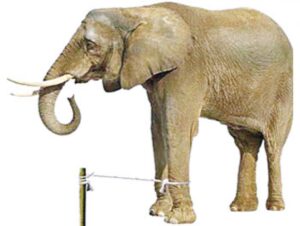
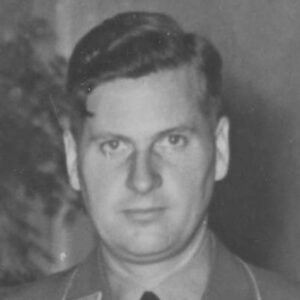 I read a story about training an elephant yesterday. It went like this, “As a man was passing the elephants, he suddenly stopped, confused by the fact that these huge creatures were being held by only a small rope tied to their front leg. No chains, no cages. It was obvious that the elephants could, at anytime, break away from their bonds but for some reason, they did not.
I read a story about training an elephant yesterday. It went like this, “As a man was passing the elephants, he suddenly stopped, confused by the fact that these huge creatures were being held by only a small rope tied to their front leg. No chains, no cages. It was obvious that the elephants could, at anytime, break away from their bonds but for some reason, they did not.
He saw a trainer nearby and asked why these animals just stood there and made no attempt to get away. ‘Well,’ trainer said, ‘when they are very young and much smaller we use the same size rope to tie them and, at that age, it’s enough to hold them. As they grow up, they are conditioned to believe they cannot break away. They believe the rope can still hold them, so they never try to break free.’
The man was amazed. These animals could at any time break free from their bonds, but because they believed they couldn’t, they were stuck right where they were.”
The story made me think about the way Hitler was able to train a generation to follow him without question. He took the children away from their parents when they were young, basically telling the parents that the state knew what was best for the children, and the parents didn’t know enough about educating the children to do a good job. He set up the Hitler Youth organization in 1933 for educating and training male youth in principles. Of course, the principles Hitler had in mind were vastly different from any that the parents could imagine. Hitler’s ideas included racism, killing any “undesirables” among the population, and controlling the people with curfews and lockdowns…to name a few. Under the leadership of Baldur Benedikt von Schirach, the head of all German youth programs, the Hitler Youth included by 1935 almost 60 percent of German boys. On July 1, 1936, it became a state agency that all young “Aryan” Germans were expected to join. Upon reaching his 10th birthday, a German boy was registered and investigated especially for “racial purity” and, if qualified, inducted into the “German Young People.” At age 13 the youth became eligible for the Hitler Youth, from which he was graduated at age 18. Throughout these years he lived a life of dedication, fellowship, and Nazi conformity, generally with minimum parental guidance. From age 18 he was a member of and served in the state labor service and the armed forces until at least the age of 21.
Two leagues also existed for girls. The League of German Girls trained girls ages 14 to 18 for comradeship, domestic duties, and motherhood. “Young Girls” was an organization for girls ages 10 to 14. The girls were expected to have babies to build the Reich…provided they qualified as “racially pure,” of course.
In the tumultuous days we currently live in, parents need to be very involved in what our children are being taught. The current racially charged climate in our nation would only be exacerbated by teaching our children things like Critical Race Theory, because it is really the new Ku Klux Klan. Racism, against any nationality is simply wrong…there is no gray area. Our children need to be able to be proud of the race they are and the background they come from. Racism is unacceptable, against any race, and we, as parents, grandparents, and 
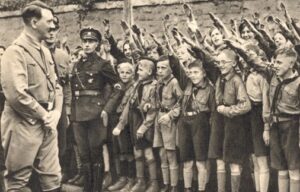 even great grandparents, need to kick the government out of our educational system, and get back to decent moral values. We need to stop the insanity in our schools, and teach our kids the true history of our nation. We must teach good values, and our children need to be taught to accept all races. We need to start with the kids, because they are the future leaders.
even great grandparents, need to kick the government out of our educational system, and get back to decent moral values. We need to stop the insanity in our schools, and teach our kids the true history of our nation. We must teach good values, and our children need to be taught to accept all races. We need to start with the kids, because they are the future leaders.

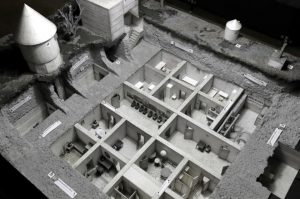 I read yesterday, that Adolf Hitler went into his underground bunker, known as the Führerbunker, with his mistress, Eva Braun on January 16, 1945. It was a coward’s move, so as not to have to face the Russians when they marched into town. He left his men to finish out the war in a losing battle, and when they wanted to surrender, they were rewarded with death. They were considered cowards, and yet Hitler made his last trip above ground on April 20, 1945, his 56th birthday. He took that opportunity, in the ruined garden of the Reich Chancellery, to award the Iron Cross to boy soldiers of the Hitler Youth, and then he retreated back to the safety of his bunker. On April 28th, Hitler learned that Reichsführer, SS Heinrich Himmler, who had left Berlin on April 20th was trying to discuss surrender terms with the Western Allies through Count Folke Bernadotte. To Hitler this was treason, and he was enraged. He ordered Himmler’s arrest. He also had Hermann Fegelein, Himmler’s SS representative at Hitler’s Headquarters in Berlin, shot. Those men were doing their best to stay alive, and Hitler sat in the safety of his bunker calling them traitors and cowards. Hitler’s bunker, while not elegant by any standard, was quite comfortable. He and Eva were well protected until the day they took their own lives on April 30, 1945…one day after their April 29th
I read yesterday, that Adolf Hitler went into his underground bunker, known as the Führerbunker, with his mistress, Eva Braun on January 16, 1945. It was a coward’s move, so as not to have to face the Russians when they marched into town. He left his men to finish out the war in a losing battle, and when they wanted to surrender, they were rewarded with death. They were considered cowards, and yet Hitler made his last trip above ground on April 20, 1945, his 56th birthday. He took that opportunity, in the ruined garden of the Reich Chancellery, to award the Iron Cross to boy soldiers of the Hitler Youth, and then he retreated back to the safety of his bunker. On April 28th, Hitler learned that Reichsführer, SS Heinrich Himmler, who had left Berlin on April 20th was trying to discuss surrender terms with the Western Allies through Count Folke Bernadotte. To Hitler this was treason, and he was enraged. He ordered Himmler’s arrest. He also had Hermann Fegelein, Himmler’s SS representative at Hitler’s Headquarters in Berlin, shot. Those men were doing their best to stay alive, and Hitler sat in the safety of his bunker calling them traitors and cowards. Hitler’s bunker, while not elegant by any standard, was quite comfortable. He and Eva were well protected until the day they took their own lives on April 30, 1945…one day after their April 29th 
 marriage. Their death came by cyanide poisoning, with Hitler’s accompanied by a self inflicted gunshot wound to the head. They did not want to face the possibility of a trial for the many war crimes he was responsible for.
marriage. Their death came by cyanide poisoning, with Hitler’s accompanied by a self inflicted gunshot wound to the head. They did not want to face the possibility of a trial for the many war crimes he was responsible for.
In what was proving to be a crumbling empire, Hitler’s death camp soldiers knew they too, were in trouble, the day after he went underground. On January 17, 1945, the Russians were approaching Auschwitz. The decision was made to evacuate most of its population and send them on a death march. It was the largest and the most notorious of the death marches. Just nine days before the Soviets arrived at the death camp at Auschwitz, the SS marched nearly 60,000 prisoners out of the camp toward Loslau, 39 miles away. There, they were put on freight trains to other camps. Approximately 15,000 prisoners died on the way, which is why it was called a death march. Loslau recorded a freezing -4°F and lower at the time the prisoners were arriving. Residents tried to help the prisoners, and many prisoners regained freedom between Auschwitz and Loslau, as the residents helped them escape. The prisoners who were left at the camp were liberated on 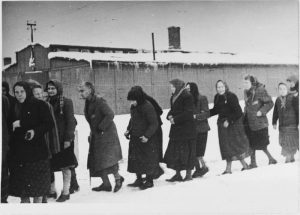
 January 27, 1945, which is a day now commemorated as International Holocaust Remembrance Day. In years after the Holocaust, survivors, such as Primo Levi, Viktor Frankl, and Elie Wiesel, wrote memoirs of their experiences in Auschwitz, and the camp became a dominant symbol of the Holocaust. In 1947, Poland founded the Auschwitz-Birkenau State Museum on the site of Auschwitz I and II, and in 1979, it was named a UNESCO World Heritage Site.
January 27, 1945, which is a day now commemorated as International Holocaust Remembrance Day. In years after the Holocaust, survivors, such as Primo Levi, Viktor Frankl, and Elie Wiesel, wrote memoirs of their experiences in Auschwitz, and the camp became a dominant symbol of the Holocaust. In 1947, Poland founded the Auschwitz-Birkenau State Museum on the site of Auschwitz I and II, and in 1979, it was named a UNESCO World Heritage Site.

